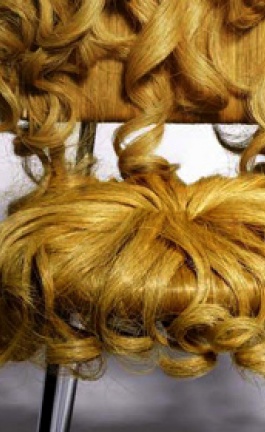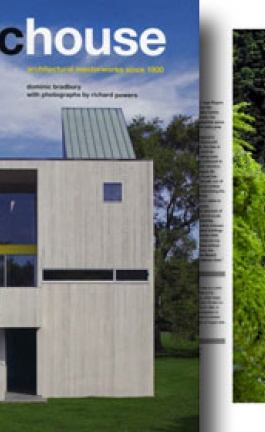'The Secret' 2009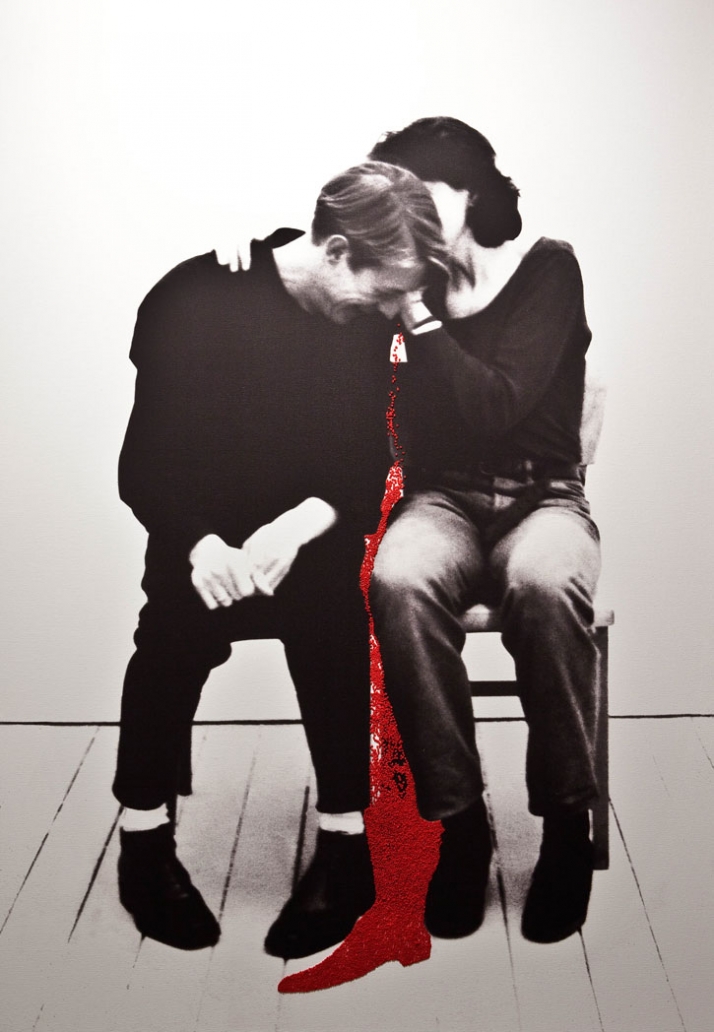
print, embroidery on canvas
115 x 80 cm
photo © Odysseas Lekkas
Maria Ikonomopoulou is no ordinary artist. She is one of those dreamers that manage to transmit with their art something extraordinary, simple and at the same time complicated, intense but liberating, familiar but at the same time unknown. She mixes traditional folk techniques, newspaper cutouts, forgotten photos, chalk, painting and graphics and makes out of them magic. Ikonomopoulou is strongly influenced by nature and loves to make open air interventions that often even include free giveaway of her work. Her creations have a surprising ability to connect with all kind of audiences and are stripped down to the essential: no theoretical inventions as excuses, no baroque references, no unnecessary excesses. Ikonomopoulou happens to be one of those Greek artists that have sought inspiration far away from their own country. Having Holland as her basis, she is influenced by both Greek and Dutch cultures and she considers all of these contradictions and similarities as the core of her art. We are more than proud to offer you an exclusive interview with her where she bares it all. Enjoy!
[ Most of the pictures below are taken from the "Intimate Distances" exhibition of Maria Ikonomopoulou which will be on view till the 31st of December, 2009 at Martinos antique & art gallery in Athens, Gr (Pindarou 24, Kolonaki) // An exhibition curated by Christina Petrinou ]
'Intimacy' 2008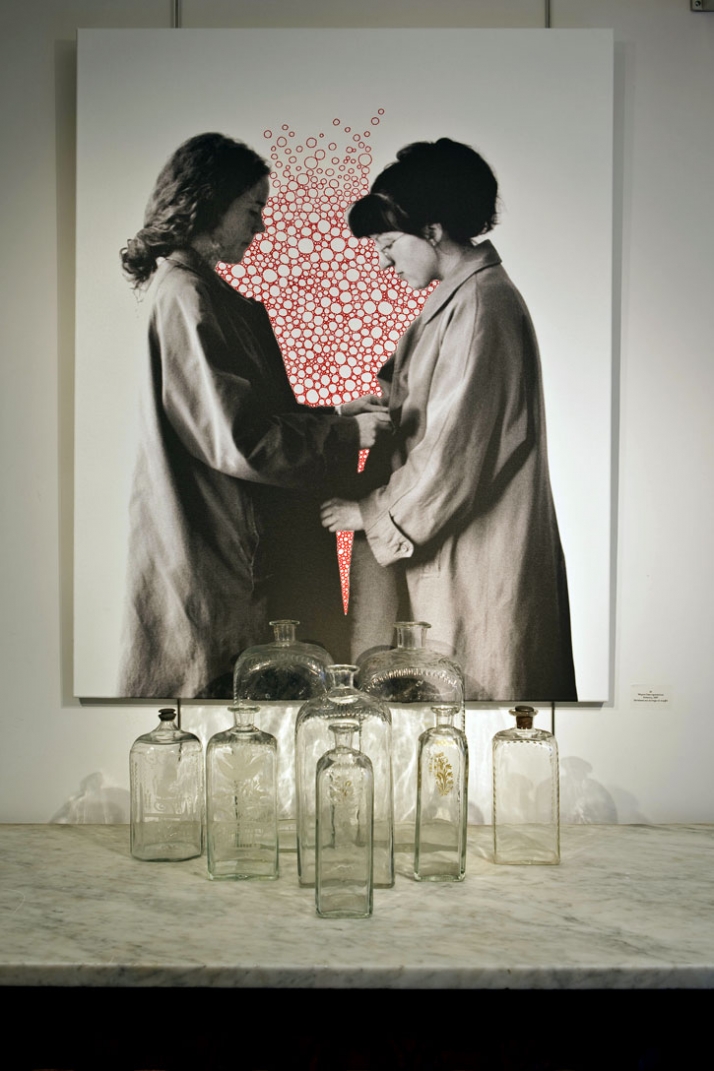
print, embroidery on canvas
100 x 80 cm
photo © Odysseas Lekkas
Well, Maria, how did everything start?
Oh! This is a nice question! I think that consciously all started by ‘documenting’ a teacup I’ve made out of wet ground by taking a picture of it, during my vacations as a teenager. Unconsciously, everything started in the early 60s during my summer vacations at my grandmother’s village in the south of Peloponnese. Her ‘hand - making’ activities, such as baking bread, taking care of plants and vegetables, waving carpets and her genius and consistent transformation of all fabric remnants into useful bags - for keeping all kind of things inside – deeply impressed me. I remember her as a person that could make everything with her hands -and she actually did so. She is still my personal hero and a big source of inspiration.
'City Flowers' (detail) 2008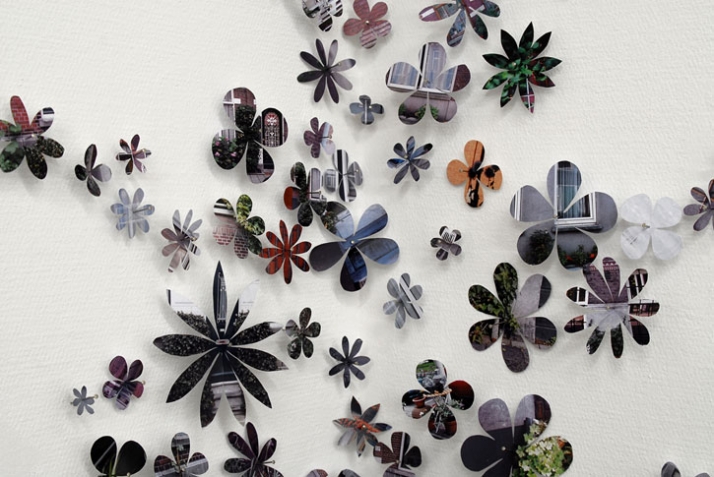
print on cut out paper
various sizes
photo Rick Messemaker
YATZER article // Growing Care by Maria Ikonomopoulou
You have been living for the last decades in Rotterdam, Holland. How did you come up with this decision and in which way has it influenced your art?
The decision to move out of Greece was a practical one and had to do with the studies I wanted to follow at that time. Although everything was arranged for me to study in Italy, during some short vacations just before going there I had a wow-experience with The Netherlands and I suddenly changed my plans. It has been the best decision in my life. In Netherlands I found what I was truly looking for, the possibility to live and work under conditions of individual freedom, learning to deal at the same time with the responsibility that this freedom involves. My work ethos is definitely Dutch, I like working a lot and “I don’t wait anything to come other than the bus”, which means that I am not afraid to initiate things I would like to do. The distance from Greece gave me the opportunity to appreciate the inspiration sources one can find there. Finding a balance between the different ways Greek and Dutch society are organized, with Greece opting for collectiveness and Netherlands being more into individualism, form the main question in my work.
'Sisters' 2008
print, embroidery on canvas
30 x 40 cm
photo © Odysseas Lekkas
In your “spaces between us” series embroideries fill the negative spaces between two or more photographed subjects. Do you consider that the space between people is getting constantly more difficult to be filled? And what is the role that art can play regarding this situation?
Yes, the space between us is getting difficult to be filled because of our extraordinary freedom. The importance of togetherness has to be found out again. How to practice togetherness in our days, without fixed social rules and rituals, is a fundamental question for me. What I do know for sure is that the moments of true connection with other human beings are moments of deep happiness, so I am interested to find out the right conditions in order to make those moments happen. Art can help this process by giving a shape to difficult and important questions about universal themes and make us think about them.
Maria Ikonomopoulou // portrait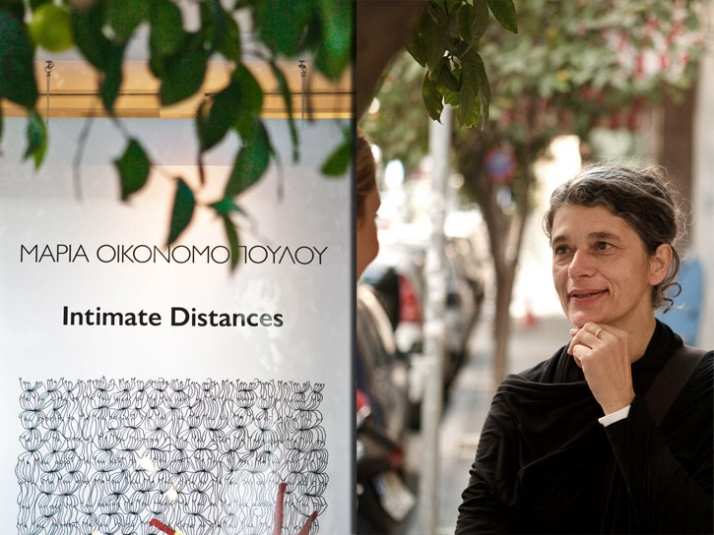
photo © Odysseas Lekkas
You seem to have a strong fascination for red color. What does it represent for you?
It is a sign of importance, emergency, vitality, power, warmth, passion, life.
'Spaces Between Us'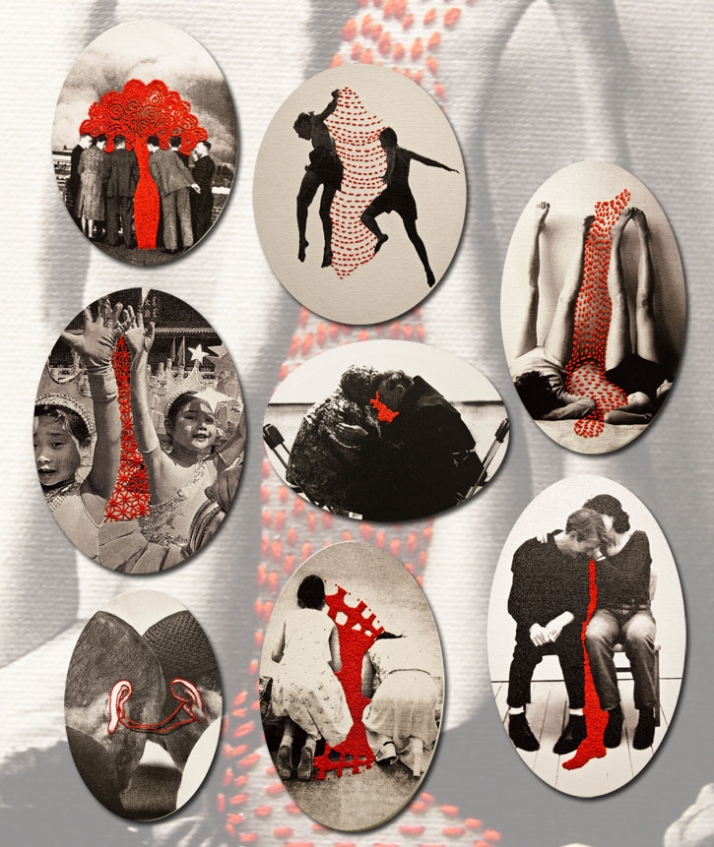
photo © Odysseas Lekkas
overview installation 'Spaces Between Us'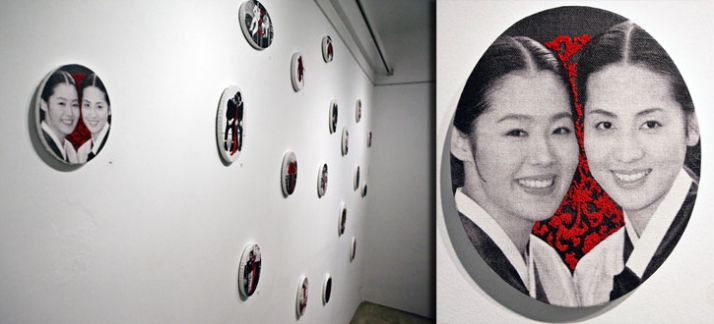
photo © Odysseas Lekkas
You have made a lot of interventions in public spaces, keeping a record of all the names of the people that participated in them. Furthermore, you often use them in future installations and works as paper cutouts and handwritten texts. Is it an attempt to keep a visual memory of your life and to maintain a sense of continuity in your art?
Being unique and at the same time being part of a bigger entity is something I often think about. That’s how ιt started my fascination with our proper first names. We learn that we are totally unique in this world, but then how does it come that we “wear” second-hand names? So I started to note down and collect in many different ways the first names of the people that I come across in my life. I feel that meeting all those people has, in a way, shaped me into the person I am right now. The series of pieces involving the use of the first names came out of the need to visualize this feeling. And as you have noticed already, I had also the wish to connect different parts of my work, the pieces I am creating for the public space, where I collaborate with a lot of people, and the studio pieces. There is an inspiring interaction between the two parts, they compliment each other a lot, and I wanted to celebrate that.
Maria Ikonomopoulou // portrait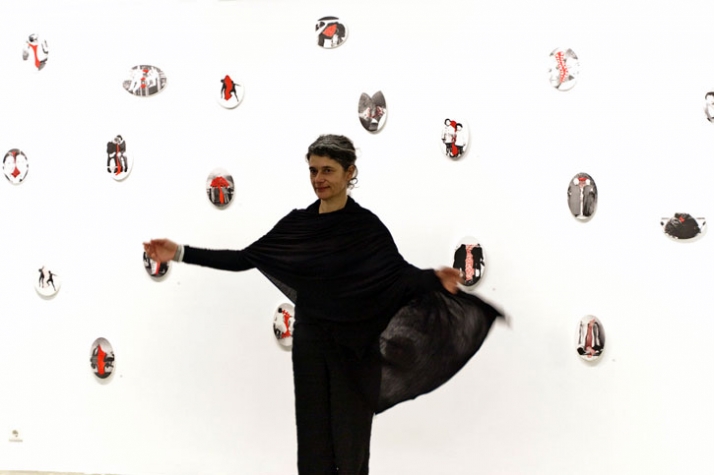
photo © Odysseas Lekkas
'need to grow -5-' 2008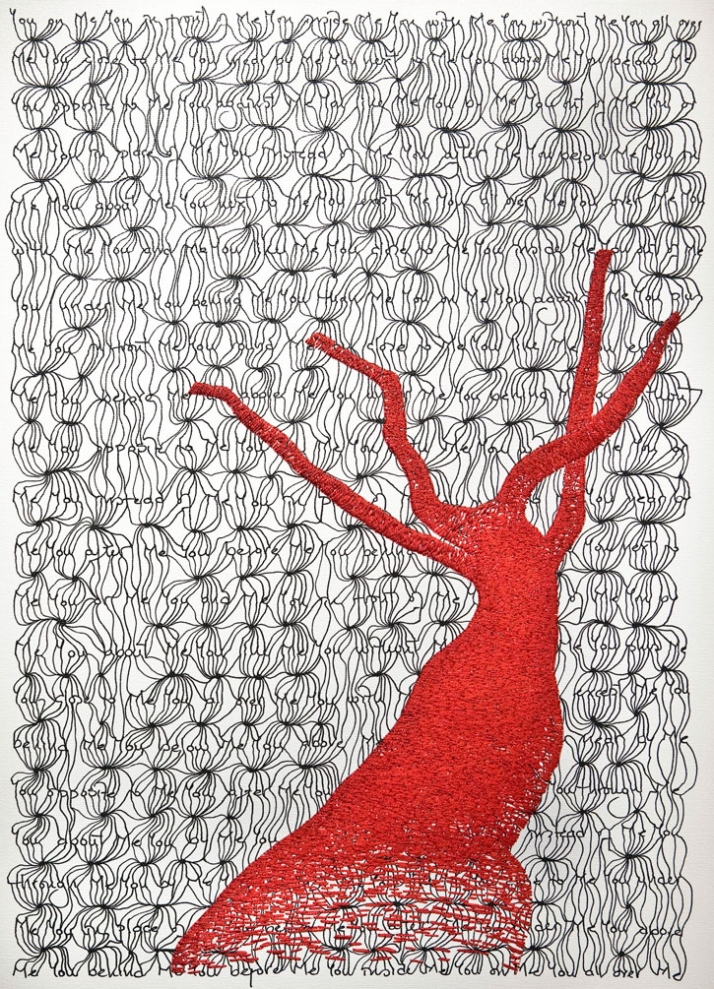
print, embroidery on canvas
50 x 37 cm
photo © Odysseas Lekkas
overview Martinos gallery 3th floor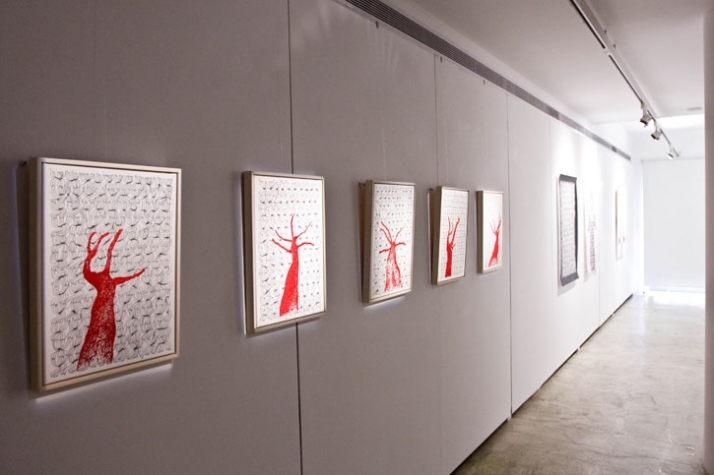
photo © Odysseas Lekkas
Nature seems to play a prominent role in your work, from natural phenomena like floods till the presence of green spaces in the big cities. What other things inspire you in your every day life?
I am fascinated by all kind of hand-made things, embroidery for example but also by workers repairing old Dutch streets. Recently I was inspired by the making process of the concrete floor of a garage entrance that I saw in Greece. I love walking in the streets of Rotterdam and Athens, which I often visit. I love to observe the small “installations” or practical solutions that citizens create for satisfying their needs or just for pleasure in the public space of their homes and shops. I learn a lot from this individual freedom to “design” your own life.
'In Between' 2008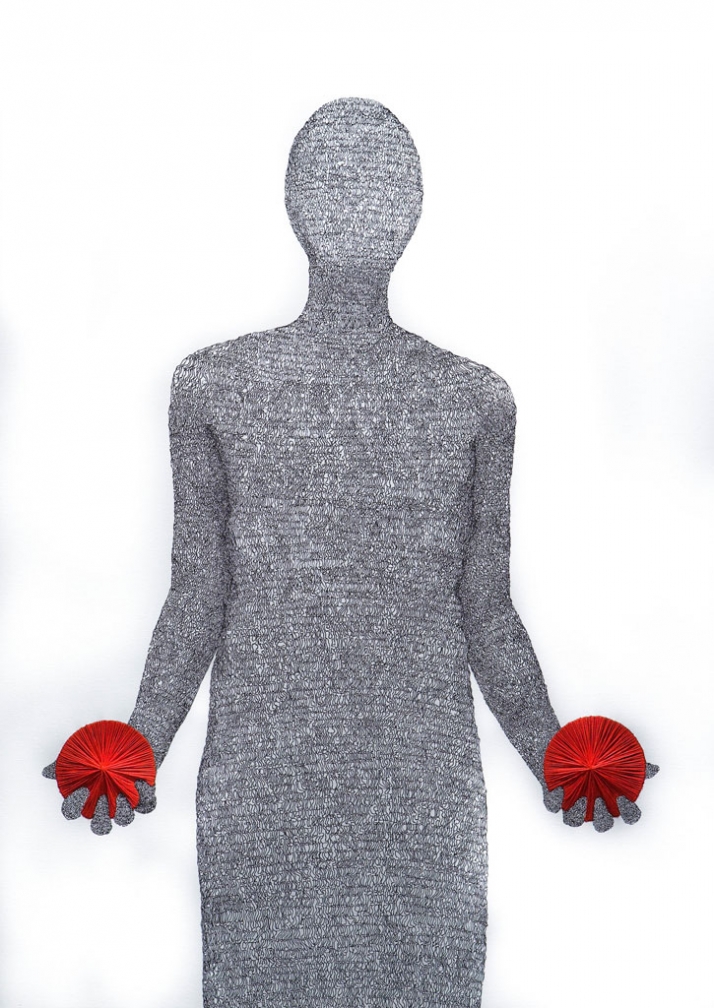
print, embroidery on canvas
110 x 80 cm
photo © Odysseas Lekkas
You often alter photographs that you have been collecting over the years and put them in a totally different context, giving them a new meaning. Is the context essential for naming something as art today? Can art breathe outside of a gallery? How do people react when, during some of your public interventions, you give your artworks for free?
This interests me a lot because, first of all, it deals with the freedom to find alternative ways to communicate ideas outside of the established art system that marks them as money value products. In my experience until now, the public space is tough for vulnerable art pieces but at the same time it gives me a lot of satisfaction coming from the direct contact of those pieces with an audience that was not originally looking for them. The passing by people get the joy of a surprise when they notice them and the pieces confront temporality and ignorance that puts them into the perspective of real life. The fact that the pieces are given or can be taken away for free provokes different kinds of reactions. Some people try to take as many as possible, others laugh and walk away but also they may say “thank you” and start a conversation about the content of the piece. I find all reactions valuable because they are honest.
'Connections' 2008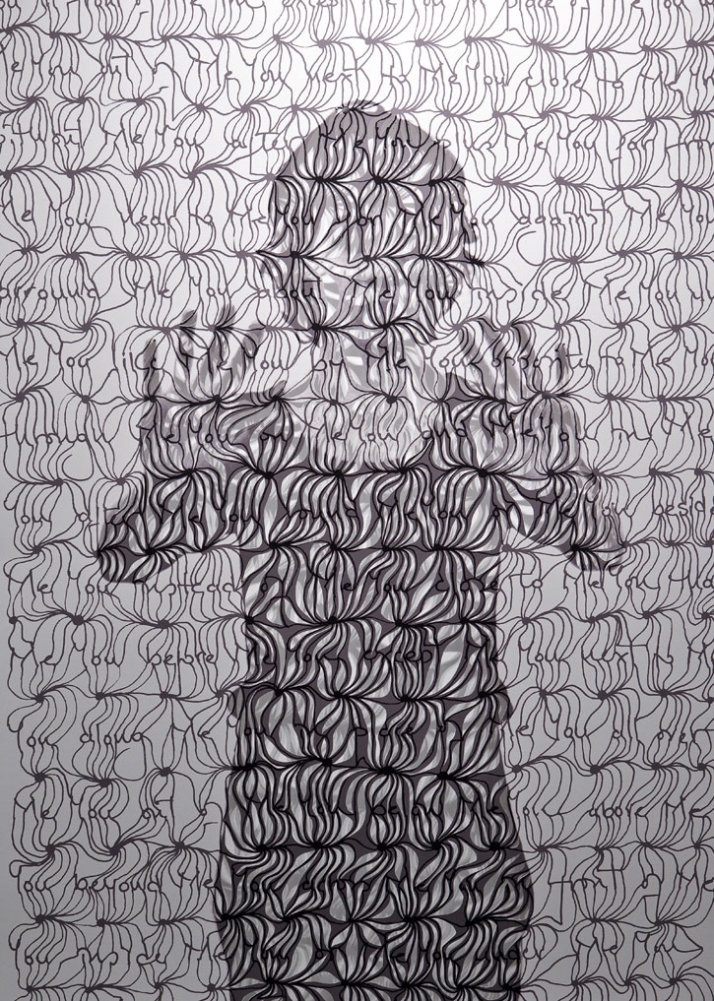
print on cut out paper
110 x 80 cm
photo © Odysseas Lekkas
Martinos galley ground floor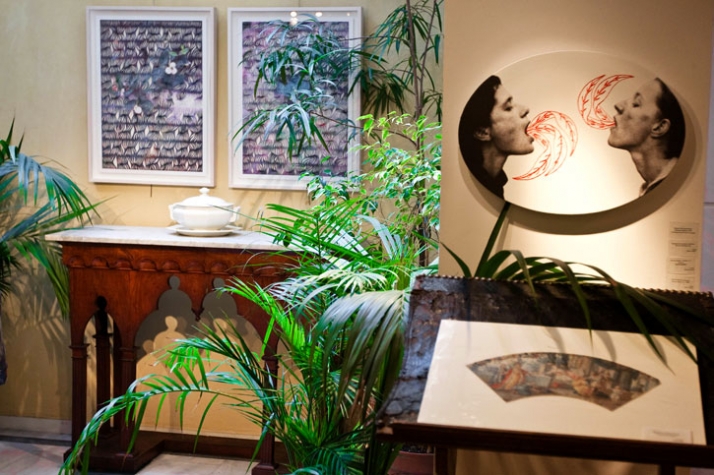
photo © Odysseas Lekkas
I was taking a look at your private collection of art at your official website and I couldn’t help but notice a strong link between your creations and the ones that you collect. I do not know if you see it that way, but do you think that we tend to get fascinated by people that speak the same language with us?
Yes, I believe so! I need to be surrounded by pieces they speak the same language or another one that I do like in order to learn and say something that I haven’t articulated yet. They complete my life, give me hope and stimulate me to go on.
'YOU with ME' 2006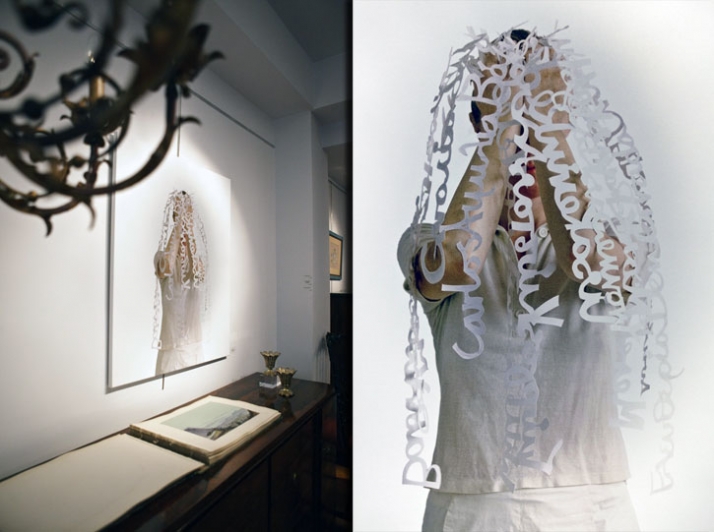
print on canvas
100 x 80 cm
photo © Odysseas Lekkas
What are you currently working at? And what is there left to be explored?
I am working on a big project that is going to be realized during April and May in the city of Elefsina, Greece. The title is ‘Growing Ground’ and it is about connecting strategies, about giving and receiving, all of them through the transformation of a public area into a collective patio. The challenge is to find out the scale limits that an interactive project must have in order to keep its quality high. I also have to explore my personal capacity to concentrate during a long period of working outdoors. That’s why I feel lucky that I first have to work on a commission of the Art City Council of Rotterdam that will give me the chance to experiment with large scale print techniques. This actually means a lot of studio pleasure and the exploration of new possibilities.
'water speaking' 2009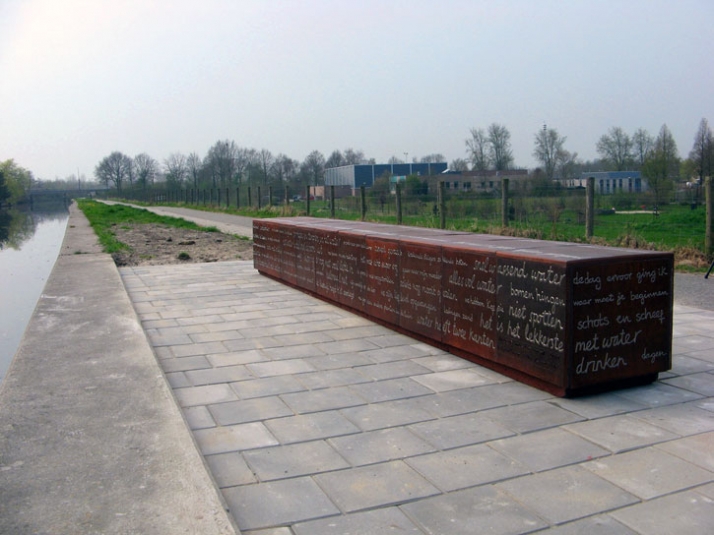
location : Wilnis, Ringdijk (NL)
made in collaboration with E.Pikaar
ceramic, platinum,glazing
53 x 500 x 57 cm
commissioned by the Municipality of De Ronde Venen // photo: Rik Messemaker
YATZER article // Maria Ikonomopoulou and the speaking water
'Growing Interests - 5 -' 2009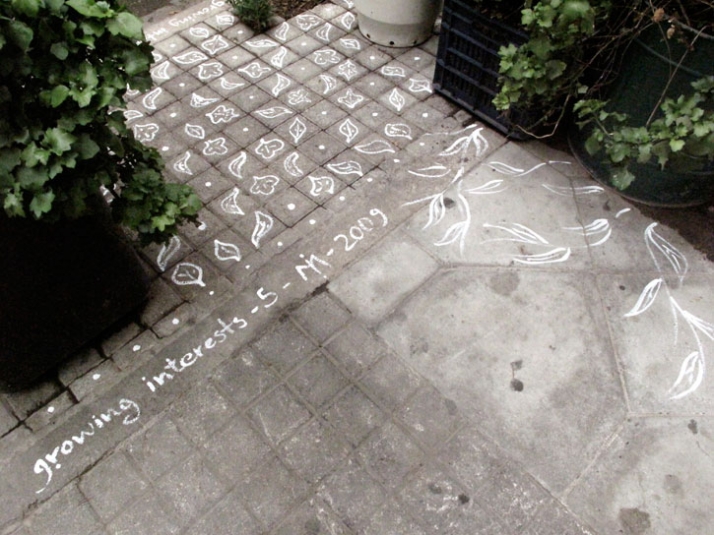
urban intervention in the frame of the show 'Expanted Ecologies' at the National Museum of Contemporary Art in Athens
photo : Maria Ikonomopoulou
'Growing Interests - 4 -' 2009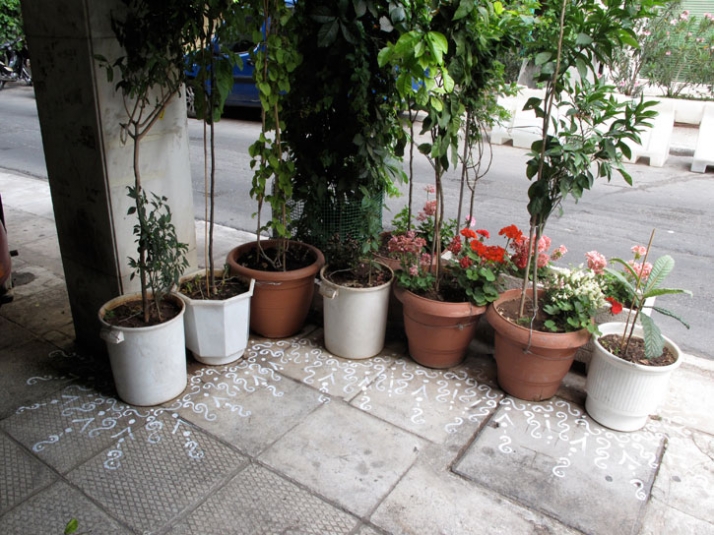
urban intervention in the frame of the show 'Expanted Ecologies' at the National Museum of Contemporary Art in Athens
photo : Maria Ikonomopoulou





